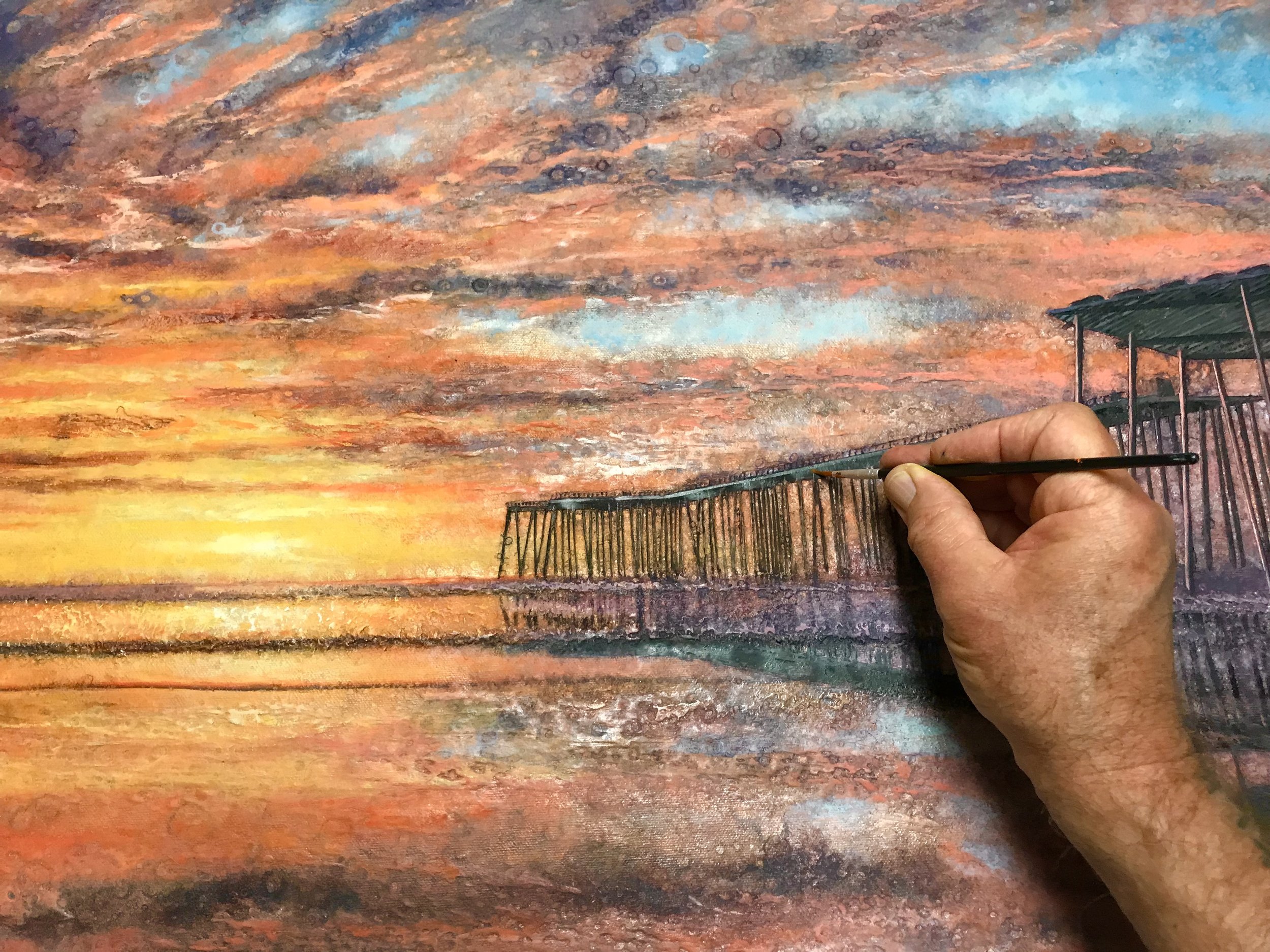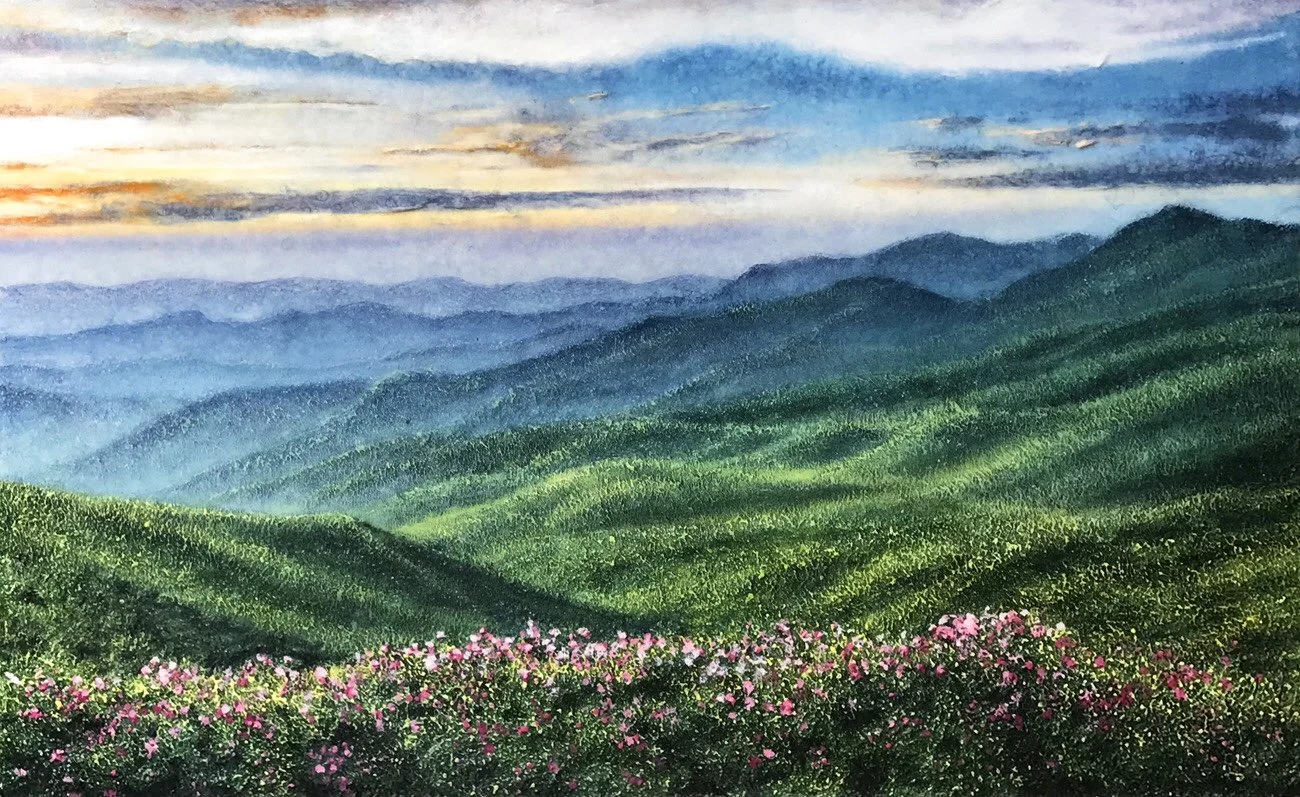How many extroverts does it take to change a light bulb? Twenty. One to change the bulb and the others and cheers him on and enjoy that moment of comradery.
How many introverts does it take to change a light bulb. None. He’d rather light a candle instead because of the beautiful ambience that candlelight creates.
Wow, okay this morning I was talking to a studio visitor and she was really trying to understand the artist mind. GOOD LUCK WITH THAT ONE! After trying to figure me out, she said that she assumed that all artists were introverts and that it was so odd I was obviously an extrovert.
But…
I am no extrovert. I know how to act like an extrovert. I even enjoy it. But it’s exhausting to me. I don’t think she believed me when I told her that though. ”You seem like a happy person though,” she said, “and obviously one that likes being around people”.
This brings up so many thoughts in my head, and I need to write them down to process them:
First of all, I would imagine an artist could be EITHER personality type. I would also imagine that the art an extrovert would come up with might look and feel different from that produced by an introverted mind, but maybe not. But yes, I don’t know what being an extrovert or introvert has to do with being an artist of some sort.
This woman was seriously doubting that I was in truth an introvert (because I seemed happy and obviously enjoyed people). Okay look, introverts are not always depressed. There. I said it. You know, extroverts can get depressed too. Introversion and misery are not synonymous. I personally know introverts who laugh. True statement. And we can be very happy (as long as we get some alone time to recharge). And both introverts and extroverts have to recharge to love people well and to enjoy life. We both do it, we just recharge differently.
Introverts don’t hate being with people. We get bad press. Being an introvert does not mean you don’t love and enjoy people. My gosh, from what I read, even Jesus Christ went off by himself at times to be with his own mind and his God. I don’t think people associate Jesus with someone who did not love and enjoy people though, right? Extroverts may like huge parties (with 100 of their closest friends) and loud music and lots of commotion. I get that. I don’t understand that but I get it. See, introverts like SMALL get togethers or one-on-one social settings so that we can have a real, deep, powerful and honest conversation. I’m not saying that extroverts don’t experience that at their large, loud parties. I just don’t fathom how that’s possible. But then, I’ve never been an extrovert so I’m completely ignorant on that point.
I admit I’m totally baffled by extroverts in general. You are a complete and wonderful mystery to me! I need y’all in my life though. My wife and three of my four kids are extroverts. Introverts desperately need extroverts in their lives. You keep life very entertaining! And I would think extroverts need introverts in their lives too. Because of our differences, we can compliment each other, like a bit of salt and a bit of sugar in that cookie recipe you like. Salt and sugar are very different but they go together so well.
So bottom line, I do not believe all artists are automatically introverts. I may be wrong. Honestly, I have no idea. I do think that what makes you introvert and extrovert is not really what you do per se, it’s where you go to recharge emotionally and spiritually AFTER you do whatever you do. My wife and kids totally get recharged by being with people. I get recharged by sitting by myself and letting my mind rest. It’s not that an introvert longs to sit in the dark and embrace misery. It’s joy we are trying to embrace there. Personally, I really crave quiet sometimes. We both (extroverts and introverts) need that recharging time so we can be ready to get back to the craziness and joy of life, it’s just that we have different types of batteries we’re charging I think. What a complex and beautiful thing is a human mind!
I feel better now. Back to painting.














